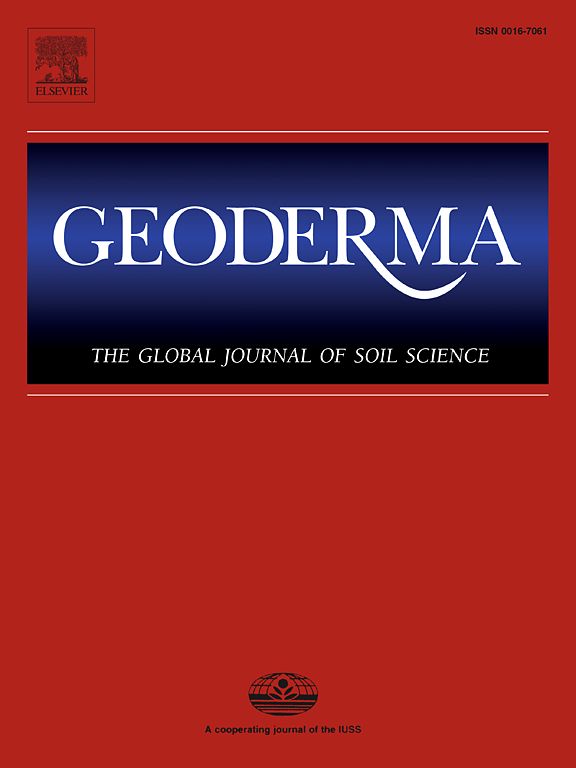Nitrogen deposition mitigates long-term phosphorus input-induced stimulative effects on soil respiration in a tropical forest
IF 6.6
1区 农林科学
Q1 SOIL SCIENCE
引用次数: 0
Abstract
Atmospheric nitrogen (N) deposition and anthropogenic phosphorus (P) input simultaneously affect soil respiration (RS), a crucial process that mediates soil carbon (C) cycling. However, the interaction of N deposition and anthropogenic P input on RS, as well as its components—autotrophic respiration (RA) and heterotrophic respiration (RH)—remain largely unexplored. Herein, we conducted an 8-year field experiment with N and P additions in a tropical secondary forest, integrating the vegetation traits, soil physicochemical properties, organic C fractions, and microbial properties, to explore the effects of nutrient inputs and their interactions on RS, RA, and RH. Over eight years, along P input significantly increased RS by 19.2% and RH by 42.1%. These increases were partially mitigated (by 33.2% annually for RS and 58.3% annually for RH) with the addition of N. In contrast, the co-addition of N and P enhanced RA compared to alone N or P addition, suggesting that N deposition mitigated the stimulative effect of P input on RS by reducing RH rather than RA. The structural equation model further revealed that N deposition reduced RH primarily by increasing soil N:P ratio and decreasing both the labile C fraction and fungi biomass. Our findings suggest that prevalent N deposition across low latitudes could have substantially mitigate C emissions from forest soils under anthropogenic P input.
氮沉积减轻了长期磷输入对热带森林土壤呼吸的刺激作用
大气氮(N)沉积和人为磷(P)输入同时影响土壤呼吸(RS),而土壤呼吸是介导土壤碳(C)循环的一个关键过程。然而,氮沉降和人为磷输入对土壤呼吸作用及其组成部分--自养呼吸作用(RA)和异养呼吸作用(RH)--的相互作用在很大程度上仍未得到研究。在此,我们在热带次生林中进行了为期 8 年的氮磷添加田间试验,综合考虑了植被性状、土壤理化性质、有机碳组分和微生物特性,探讨了养分输入及其相互作用对 RS、RA 和 RH 的影响。在八年时间里,随着 P 的输入,RS 显著增加了 19.2%,RH 增加了 42.1%。相反,与单独添加氮或磷相比,氮和磷的共同添加增强了 RA,这表明氮的沉积通过降低 RH 而不是 RA 来减轻了磷对 RS 的刺激作用。结构方程模型进一步表明,氮沉积主要通过提高土壤氮磷比、降低可溶性碳组分和真菌生物量来降低相对湿度。我们的研究结果表明,低纬度地区普遍的氮沉积可能会大大缓解人为磷输入下森林土壤的碳排放。
本文章由计算机程序翻译,如有差异,请以英文原文为准。
求助全文
约1分钟内获得全文
求助全文
来源期刊

Geoderma
农林科学-土壤科学
CiteScore
11.80
自引率
6.60%
发文量
597
审稿时长
58 days
期刊介绍:
Geoderma - the global journal of soil science - welcomes authors, readers and soil research from all parts of the world, encourages worldwide soil studies, and embraces all aspects of soil science and its associated pedagogy. The journal particularly welcomes interdisciplinary work focusing on dynamic soil processes and functions across space and time.
 求助内容:
求助内容: 应助结果提醒方式:
应助结果提醒方式:


